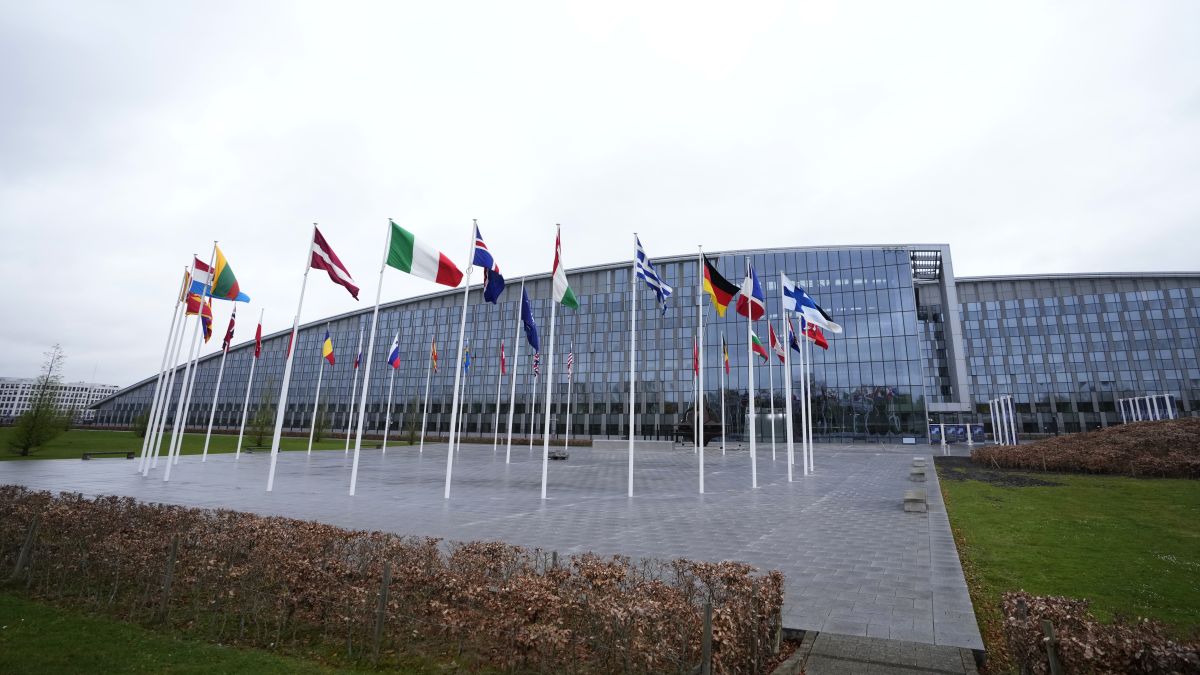The North Atlantic Treaty Organisation (NATO) has united the West for 75 years, and with two wars going on around the world, it now has greater responsibilities. Since its inception on 4 April, 1949, it has expanded from 12 founding members to 32 member countries, all working together to keep our people safe.
To commemorate the anniversary, US Ambassador to NATO Julianne Smith will host all diplomats today, including Secretary of State Antony Blinken and other dignitaries, at her official residence outside Brussels, Truman Hall, named after President Harry S Truman, who oversaw the alliance’s formation in 1949.
In July, President Biden will host a NATO leaders’ summit in Washington, where the founding treaty was signed. The pact aimed to defend members from Moscow’s hostility, a task that the alliance is now taking on again.
As NATO marks its 75th anniversary, here are some facts and figures about the organisation forged in the Cold War and re-energised by Russia’s war on Ukraine.
From 12 to 32
Just 12 founding member countries signed the North Atlantic Treaty back in 1949 as the United States, Canada and much of Western Europe clubbed together to face up to the threat of former World War II ally the Soviet Union.
As the alliance’s first Secretary General Lord Ismay quipped, NATO’s purpose was to “keep the Soviet Union out, the Americans in, and the Germans down”.
In 1952, often uncomfortable bedfellows Turkey and Greece joined, before West Germany became a member three years later.
Impact Shorts
More ShortsAfter the end of the Cold War, NATO went through several waves of eastward enlargement that saw its border with Russia grow with the inclusion of Poland and the former Soviet Baltic states.
After Moscow invaded Ukraine in 2022, Nordic neighbours Sweden and Finland reversed long-standing policies of non-alignment — taking the alliance to 32 members.
In total, NATO countries account for close to one billion people and around 50 per cent of the world’s GDP.
Together they have 3.2 million men and women serving in their militaries.
Iceland is the only member without its own army.
An attack on one member is an attack on all
NATO has only ever once triggered its Article Five collective-defence clause — which says an attack on one member is considered an attack on all — after the 9/11 attack on the US in 2001.
That decision was a show of support for the alliance’s leading military power and far different from the threat in Europe originally foreseen by its founders.
The fallout from 9/11 saw NATO get involved in Afghanistan where it remained until 2021, when a calamitous US-led withdrawal allowed the Taliban to take back power.
Goal to spend two per cent GDP on defence
In response to Russia’s seizure of Crimea from Ukraine in 2014, NATO allies agreed they would aim to spend two per cent of their GDPs on defence.
That goal was raised after Moscow launched its all-out invasion of its neighbour in 2022 to having two per cent as a minimum.
Former US president Donald Trump has railed against NATO countries not spending enough, warning he would encourage Russia to “do whatever the hell they want” to those not meeting their obligations.
In 2024, 20 NATO members are expected to reach two per cent, up from just three in 2014.
25 years in Kosovo
June 2024 will mark 25 years since NATO deployed troops in Kosovo in 1999, completing the withdrawal of Serbian forces after its 77-day air campaign.
That military intervention was just the second in NATO’s history, following its involvement in Bosnia in the mid-1990s.
A quarter of a century on, NATO’s Kosovo Force (KFOR) still remains on the ground in the Balkans, making it the alliance’s longest-running mission.
After a rise in tensions last year led to rioting that wounded 93 NATO troops, allies agreed to send 1,000 additional soldiers to KFOR — taking its total to around 4,500.
Beyond the Balkans, NATO’s other major overseas missions have included its nearly two decades in Afghanistan and the 2011 bombing campaign in Libya.
France spent 43 years outside NATO
No country has ever withdrawn from NATO, but France spent almost 43 years outside its military command structure after President Charles de Gaulle pulled out in 1966 in protest at US domination.
The decision — which saw NATO move its headquarters from Paris to Brussels — was only reversed by President Nicolas Sarkozy in 2009.
Nonetheless, France’s sometimes strained relationship with NATO continues — and in 2019 President Emmanuel Macron accused the alliance of suffering “brain death”.
Macron later said Russia’s 2022 invasion of Ukraine had woken up NATO with the “worst of electroshocks”.
With inputs from AFP


)

)
)
)
)
)
)
)
)



